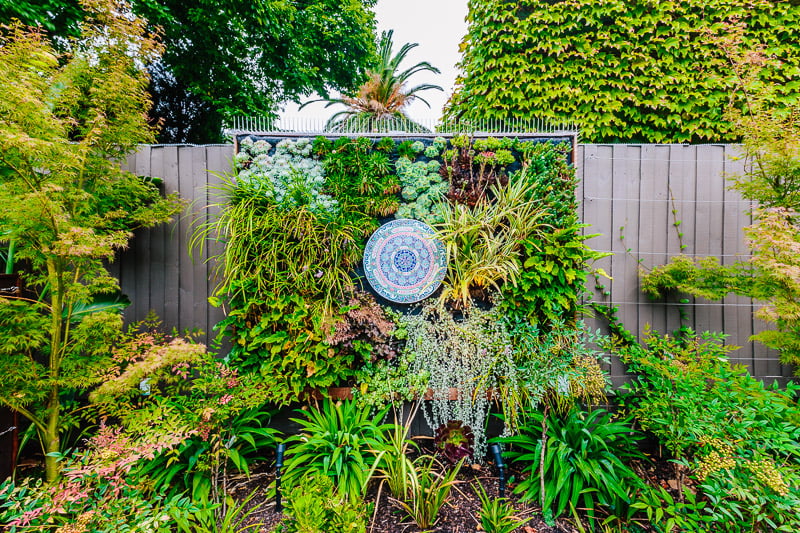If you’ve always wanted to explore the world of gardening but are unsure where to start, look no further. This beginner’s guide to urban gardening is here to help you navigate the rewarding and fulfilling world of growing your own plants in an urban setting. Whether you have a small balcony, a rooftop, or just a sunny windowsill, this article will provide you with the essential tips and tricks to get started on your urban gardening journey.
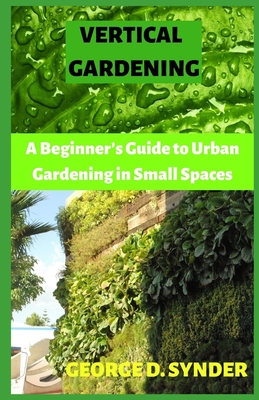
This image is property of images.booksense.com.
Choosing the Right Location
Consider Available Space
When starting an urban garden, one of the first things to consider is the available space you have. Look around your home or apartment and identify areas where plants can thrive. Whether it’s a balcony, rooftop, or even a small corner inside your home, you’ll want to maximize the use of the space you have. Consider the size and weight of the containers or raised beds you plan to use, and ensure they fit comfortably in the chosen location.
Assess Sunlight Exposure
Sunlight is essential for the growth and development of plants. Before choosing a location for your urban garden, assess the amount of sunlight it receives throughout the day. Most edible plants require at least six hours of direct sunlight, so it’s important to choose a spot that offers adequate sun exposure. Take note of any shading or obstructions that may block sunlight, such as nearby buildings or trees, and consider how they might impact your garden.
Evaluate Soil Quality
The quality of the soil plays a significant role in the success of your urban garden. Assess the soil in your chosen location to determine its composition and fertility. Urban areas often have soil that is compacted, contaminated, or lacking in essential nutrients. Consider conducting a soil test to get a better understanding of its pH level, nutrient content, and overall health. This can help you make informed decisions when it comes to soil preparation and plant selection.
Ensure Access to Water
Like all plants, urban gardens require a consistent supply of water to thrive. When choosing a location, consider the proximity to a water source. It should be easily accessible to make watering a convenient and efficient task. If you don’t have a water source nearby, you may need to explore alternative options such as using rainwater collection systems or installing drip irrigation. Ensuring access to water will make the maintenance of your urban garden much easier in the long run.
Types of Urban Gardens
Container Garden
Container gardening is a popular option for urban gardeners with limited space. It involves growing plants in pots, containers, or even recycled items such as buckets or old tires. Container gardens allow for versatility in terms of location, as they can be placed on balconies, windowsills, or even indoors. You can choose plants that are suitable for the size of your containers and experiment with different combinations to create an aesthetically pleasing display.
Vertical Garden
Vertical gardening is an innovative way to maximize your available space in an urban setting. It involves growing plants vertically, either on a wall, trellis, or specially designed vertical gardening structures. By utilizing vertical space, you can grow a wide variety of plants in a compact area. Vertical gardens not only provide a unique visual appeal but also offer practical solutions for those with limited ground space.
Raised Bed Garden
Raised bed gardening involves creating a garden bed that is elevated above the ground. This can be achieved by building a frame and filling it with soil. Raised beds offer numerous benefits, including improved soil drainage, better control over soil quality, and easier maintenance. They are particularly useful in urban areas where the existing soil may be of poor quality. Raised bed gardens can be customized to fit any space, making them a great option for urban gardeners.
Window Boxes
Window boxes are another fantastic option for urban gardeners, especially for those with limited space outdoors. These boxes can be attached to windowsills or hung from railings, creating a charming display of plants. Window boxes are ideal for growing small herbs, flowers, or even compact vegetables. They add a touch of greenery and vibrancy to your windows, enhancing the overall aesthetics of your urban living space.
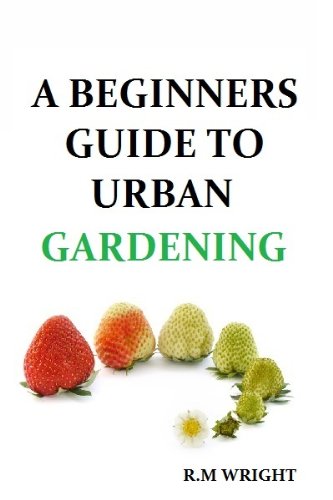
This image is property of Amazon.com.
Selecting Suitable Plants
Determine Hardiness Zone
One of the key factors in selecting plants for your urban garden is determining your hardiness zone. Hardiness zones are categorized based on climate and help identify which plants are most likely to thrive in a specific region. By understanding your hardiness zone, you can choose plants that are well-suited to the conditions in your area. This ensures that your urban garden has the best chance of success, as the plants will be able to withstand the local climate and temperature fluctuations.
Consider Light Requirements
Different plants have varying light requirements, and it’s important to choose plants that match the amount of sunlight your chosen location receives. Some plants thrive in full sun, while others prefer partial or even full shade. Consider the lighting conditions in your urban garden and select plants accordingly. This will help ensure that your plants receive the optimal amount of sunlight for healthy growth and productivity.
Evaluate Space Constraints
Given the limited space in urban environments, it’s essential to consider the size and growth habits of the plants you choose. Consider the available space in your urban garden and select plants that won’t overcrowd or outgrow their designated area. Look for compact or dwarf varieties of fruits, vegetables, and herbs to maximize your yield without sacrificing space. Vertical gardening techniques can also be utilized to make the most of your vertical space.
Choose Low-Maintenance Plants
To make your urban gardening journey more manageable, consider selecting low-maintenance plants that require minimal care. These plants are often hardy, drought-tolerant, and disease-resistant. Native plants are a good choice, as they are adapted to the local environment and tend to be more resilient. By choosing low-maintenance plants, you can enjoy the benefits of urban gardening without feeling overwhelmed by excessive upkeep.
Preparing the Soil
Remove Weeds and Debris
Before preparing the soil for your urban garden, it’s important to clear the area of any weeds, debris, or unwanted vegetation. Weeds can compete with your plants for resources and may harbor pests or diseases. Clearing the area also provides a clean slate for establishing your garden and allows for better soil preparation and planting.
Improve Soil Structure
Urban soils often suffer from compaction and poor structure due to construction or human activity. To improve the soil structure, loosen it by gently tilling or aerating the area. This helps break up compacted soil, allowing roots to penetrate easily and promoting proper drainage. Adding organic matter, such as compost or well-rotted manure, can also improve soil structure over time.
Amend the Soil with Compost
Compost is a valuable addition to any urban garden soil. It enriches the soil with essential nutrients, improves water retention, and promotes healthy microbial activity. Incorporate compost into the soil by mixing it thoroughly or creating a layer on top. This will enhance the overall fertility and structure of the soil, providing an optimal environment for your plants to thrive.
Test Soil pH
To determine the pH level of your soil, consider conducting a soil test. Soil pH affects the availability of nutrients to plants and can impact their overall health and productivity. Most plants prefer a slightly acidic to neutral pH. If your soil is too acidic or alkaline, you can amend it accordingly to bring it within the desired range. Soil testing kits are easily available and provide valuable information for successful urban gardening.
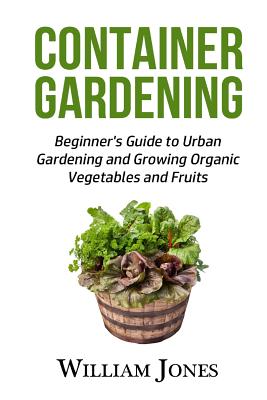
This image is property of images.booksense.com.
Providing Adequate Drainage
Use Well-Draining Containers
When gardening in containers, it’s crucial to choose pots or containers with good drainage. Proper drainage prevents waterlogging and ensures that excess water can easily drain away. Select containers with drainage holes at the bottom or consider adding your own if they are not present. Gardening in well-draining containers helps prevent root rot and other water-related issues that can harm your plants.
Add Drainage Holes
If you’re reusing containers or using unconventional items as planters, such as old buckets or crates, it’s essential to add drainage holes. Without adequate drainage, water can accumulate at the bottom and lead to waterlogged soil, suffocating plant roots. Use a drill or a sharp object to create drainage holes at regular intervals, ensuring proper water flow and preventing potential drainage problems.
Create a Layer of Gravel
In containers or raised beds, creating a layer of gravel at the bottom can further improve drainage. This prevents the soil from becoming compacted and allows excess water to flow freely through the gravel layer. The gravel acts as a barrier, keeping the soil above well-drained and preventing waterlogged conditions. Ensure the layer of gravel is at least an inch thick, providing sufficient space for water to accumulate without saturating the soil.
Use Raised Beds with Drainage
Raised beds are well-suited for urban gardening, and they inherently provide beneficial drainage. By elevating the soil, raised beds allow excess water to drain more effectively. However, it’s important to ensure that the raised bed has proper drainage within itself. This can be achieved by incorporating gravel or a layer of coarse sand at the bottom of the bed, promoting water movement and preventing waterlogged conditions.
Watering Techniques
Determine Watering Needs
Understanding the specific watering needs of your plants is crucial for their overall health and productivity. Different plants have different water requirements, and it’s essential to tailor your watering routine accordingly. Factors such as plant type, size, stage of growth, and weather conditions all influence watering needs. Research and gather information about the water requirements of the plants you’re growing to avoid under or overwatering.
Watering Schedule
Establishing a consistent watering schedule is key to maintaining a healthy urban garden. A regular watering routine ensures that plants receive a steady supply of moisture without experiencing extremes of drought or waterlogging. Consider the specific needs of your plants and monitor the moisture level of the soil. Adjust your watering schedule based on factors such as rainfall, temperature, and humidity to ensure your plants have adequate moisture throughout their growth cycle.
Avoid Overwatering
Overwatering is a common mistake that can lead to root rot, fungal diseases, and poor plant growth. It’s important to strike a balance between providing enough water for your plants and avoiding excessive moisture. Monitor the moisture level of the soil regularly and ensure that it doesn’t remain constantly wet. The best way to determine when to water is to feel the soil with your finger. If it feels dry an inch below the surface, it’s time to water.
Watering Methods: Drip Irrigation
Drip irrigation is an efficient and effective way to water your urban garden, especially if you have a large number of containers or raised beds. This method involves a system of tubes with small holes that deliver water directly to the base of the plants. Drip irrigation minimizes water wastage by targeting the root zone and avoids wetting the foliage, reducing the risk of diseases. It also helps conserve water in urban environments where water resources may be limited.

This image is property of Amazon.com.
Pest and Disease Management
Identify Common Pests
Pests can pose a threat to the health and productivity of your urban garden. Identifying common pests in your area is the first step in effective pest management. Look out for signs of pest damage, such as holes in leaves, chewed stems, or wilting plants. Common garden pests include aphids, slugs, snails, caterpillars, and spider mites. By recognizing the pests that are likely to attack your plants, you can be proactive in implementing pest control measures.
Implement Natural Pest Control
In urban gardening, it’s important to prioritize natural and sustainable pest control methods. Chemical pesticides can harm beneficial insects and disrupt the ecological balance of your garden. Instead, focus on using natural pest control methods such as companion planting, biological controls, or homemade insecticidal sprays. For example, planting marigolds among your vegetables can deter pests, and introducing ladybugs can help control aphids naturally.
Practice Good Garden Hygiene
Maintaining good garden hygiene is an effective way to prevent the spread of pests and diseases. Remove dead leaves, fallen fruits, and other plant debris regularly, as they can harbor pests and provide a breeding ground for diseases. Regularly inspect your plants for signs of pests or diseases and take appropriate action if you notice any issues. By practicing good garden hygiene, you create a healthy and clean environment for your plants to thrive.
Recognize Signs of Diseases
Plant diseases can significantly impact the health and productivity of your urban garden. Common diseases include powdery mildew, fungal leaf spots, and bacterial infections. Keep an eye out for yellowing leaves, wilting, unusual spots or lesions, or any signs of abnormal growth. If you identify signs of disease, promptly remove and dispose of infected plant material to prevent further spread. You may also consider using organic fungicides or disease-resistant plant varieties to minimize disease incidence.
Harvesting and Pruning
Proper Harvesting Techniques
Harvesting your produce at the right time ensures optimal flavor, texture, and nutritional value. Different plants have different indicators of readiness for harvest. For example, most leafy greens are harvested when they reach the desired size, while fruits are often harvested when they reach their mature color. Research specific harvesting techniques for the plants you’re growing, and consider investing in a good pair of gardening shears or pruners to make clean cuts.
Pruning for Healthy Growth
Pruning is an important practice in urban gardening to promote healthy growth and maintain plant shape. By selectively removing dead or damaged branches, you improve airflow and minimize the risk of diseases. Pruning also encourages the development of strong, new growth and can help control plant size. Make clean cuts with sharp tools, and sanitize them between each use to prevent the spread of diseases.
Encouraging Regrowth
Some plants benefit from regrowth after harvesting, and encouraging this can prolong their productivity. For example, herbs like basil or cilantro can be cut back to encourage bushier growth. Leafy greens like lettuce or spinach can be harvested by removing the outer leaves, allowing the inner leaves to continue growing. By understanding the regrowth capabilities of your plants, you can maximize their yield and enjoy fresh produce for a longer period.
Preventive Pruning
Preventive pruning involves proactively removing potential problem areas before they become a detriment. By identifying and removing branches that cross or rub against each other, you reduce the risk of rubbing wounds and subsequent infections. Preventive pruning also helps maintain an open structure, allowing for better sunlight penetration, air circulation, and overall plant health. Regularly inspect your plants and prune as needed to promote their well-being.
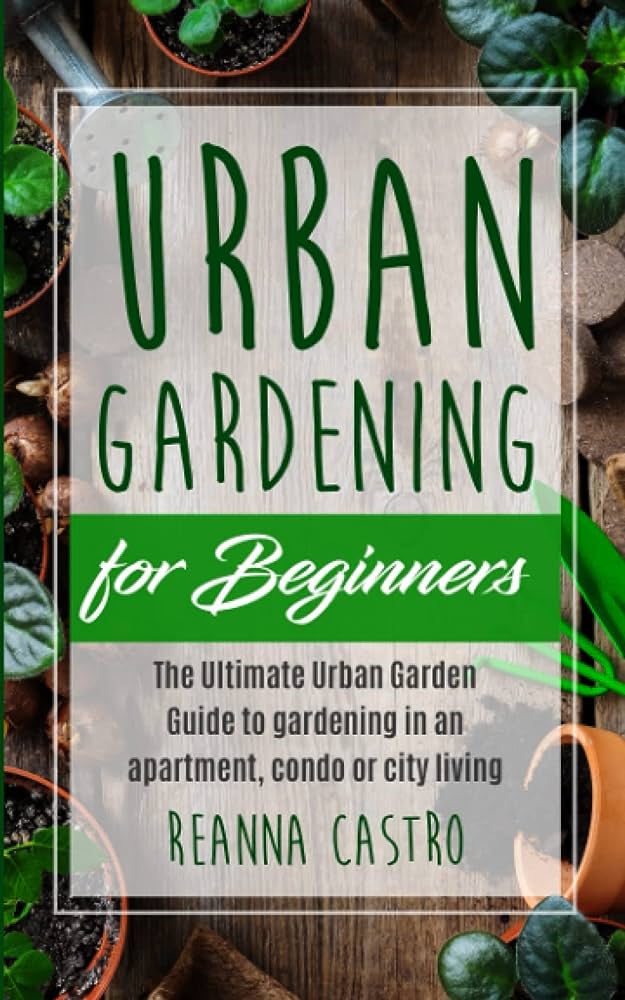
This image is property of Amazon.com.
Seasonal Considerations
Understanding Planting Seasons
Understanding the planting seasons in your area is crucial for successful urban gardening. Different plants have different preferences for the timing of planting. Some prefer cooler temperatures, while others thrive in the warmth of summer. Research the recommended planting dates for the plants you’re growing and plan your urban garden accordingly. Consider the length of the growing season and any limitations imposed by extreme weather conditions.
Prepping for Winter
Winter can pose challenges for urban gardeners, especially in colder climates. Prepare your garden for winter by cleaning up any fallen foliage, removing spent plants, and adding a layer of mulch to protect the soil from freezing temperatures. Consider planting cold-hardy crops or utilizing protective coverings such as row covers or cold frames to extend the growing season. Proper winter preparations allow for a smooth transition into spring and ensure the long-term health of your garden.
Protecting Plants from Heat
In urban environments, heat can be a significant concern, particularly during the summer months. Help your plants cope with excessive heat by providing shade or erecting shade structures. Consider using reflective mulch or installing drip irrigation to minimize water evaporation and keep the soil moist. Regularly monitor the moisture level of the soil and adapt your watering schedule to prevent drought stress. By providing adequate protection from heat, you can ensure the well-being of your plants.
Planning for Seasonal Transitions
Seasonal transitions can require adjustments in your urban gardening practices. For example, transitioning from spring to summer may involve thinning out cool-season crops to make space for warm-season plants. Planning for seasonal transitions allows you to make the most of your garden and maximize productivity. Research the specific requirements of your plants during each season and make the necessary adjustments to ensure a smooth transition and continued growth.
Community Engagement
Join Local Gardening Groups
Engaging with local gardening groups is a wonderful way to connect with fellow urban gardeners and gain valuable knowledge and support. Joining a gardening group or club allows you to participate in workshops, group activities, and educational events focused on urban gardening. You can learn from experienced gardeners, share your own experiences, and foster a sense of community with like-minded individuals who share a passion for urban greening.
Participate in Community Gardens
Community gardens are shared spaces where individuals and groups can come together to grow plants and cultivate a sense of community. Participating in a community garden allows you to access a larger space for gardening, interact with diverse individuals, and share resources and knowledge. It provides an opportunity to collaborate on larger projects and learn from experienced gardeners. Engaging in a community garden can be a rewarding experience and contribute to the overall beautification of your urban surroundings.
Share Knowledge and Resources
As an urban gardener, you have the opportunity to share your knowledge and resources with others. Whether it’s through social media, online forums, or community events, sharing your experiences and tips can inspire and motivate fellow gardeners. Share photos and updates of your urban garden, offer advice and guidance to those starting out, and create a supportive network of individuals who can learn from one another. By sharing knowledge and resources, you contribute to the growth and success of the urban gardening community.
Supporting Urban Green Initiatives
Urban gardening is part of a larger movement toward green and sustainable living in urban areas. Support urban green initiatives by advocating for policies that promote green spaces, sustainable practices, and community gardening. Get involved with local organizations or initiatives focused on urban greening and lend your voice and support to their efforts. By working together, you can help create a more sustainable and environmentally friendly urban environment for all.


